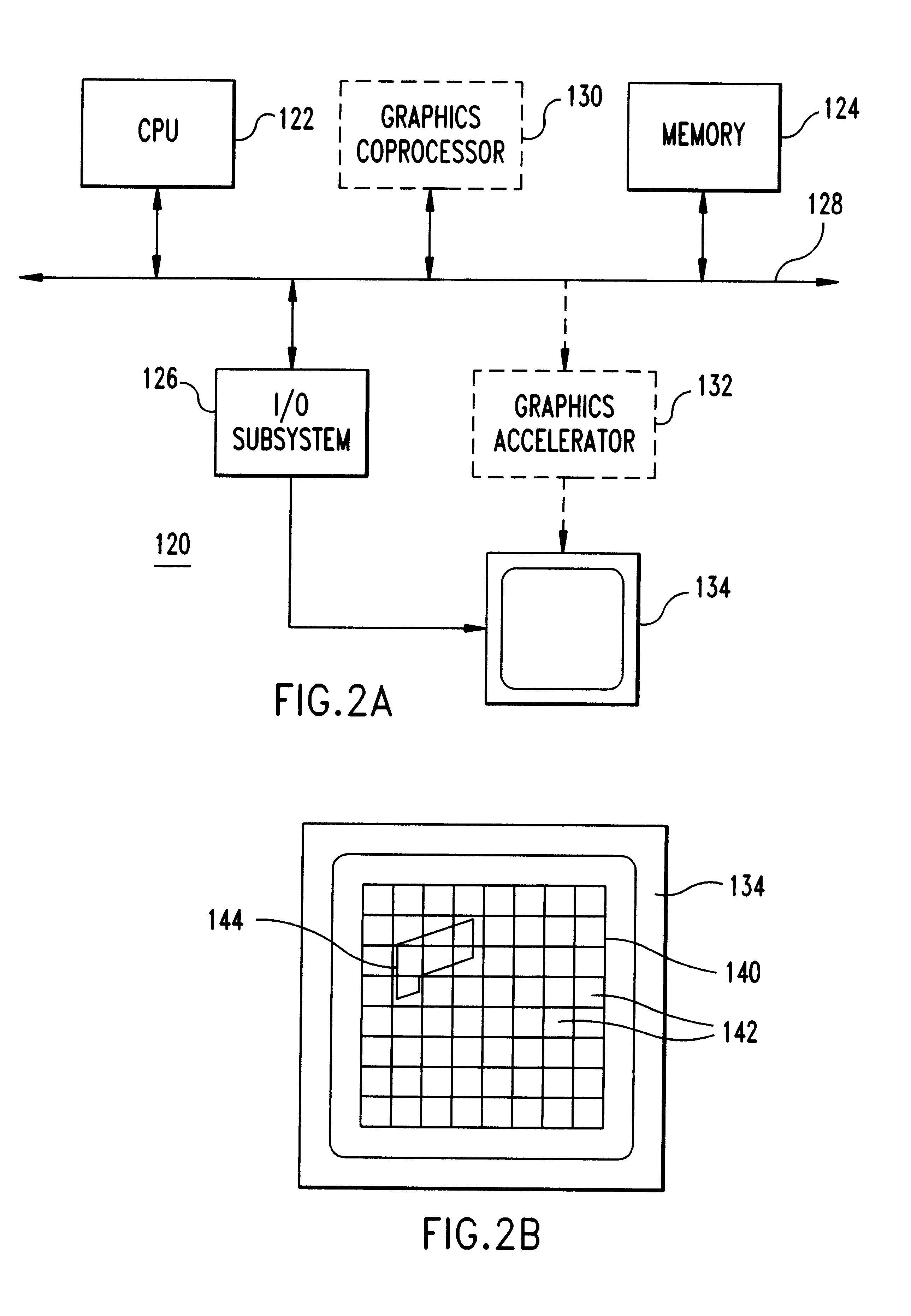Accelerated occlusion culling using directional discretized occluders and system therefore
- Summary
- Abstract
- Description
- Claims
- Application Information
AI Technical Summary
Benefits of technology
Problems solved by technology
Method used
Image
Examples
Embodiment Construction
The preferred embodiment of the present invention can best be understood with reference to the arrangement 100 of FIG. 1. In the arrangement 100 a camera 102 at the viewer position 104 views a three dimensional (3D) scene through a view frustum 106, which is also referred to herein as an image volume. Scene objects 108 and 110 in the forefront occlude object 112 (the occludee) from current viewer position 104. Thus, occluded object 112 need not be rendered by computer image processing system rendering the scene as a two dimensional (2D) image. Further, posterior aspects of occluder objects 108, 110, as well as partially occluded features of object 110, need not be rendered. By omitting rendering unnecessary (occluded) scene objects and features, the image processing time is reduced, sometimes dramatically.
Thus, the present invention is an occlusion culling process or method and system for video imaging scenes such as that in the example of FIG. 1 that includes two major steps or pha...
PUM
 Login to View More
Login to View More Abstract
Description
Claims
Application Information
 Login to View More
Login to View More - R&D
- Intellectual Property
- Life Sciences
- Materials
- Tech Scout
- Unparalleled Data Quality
- Higher Quality Content
- 60% Fewer Hallucinations
Browse by: Latest US Patents, China's latest patents, Technical Efficacy Thesaurus, Application Domain, Technology Topic, Popular Technical Reports.
© 2025 PatSnap. All rights reserved.Legal|Privacy policy|Modern Slavery Act Transparency Statement|Sitemap|About US| Contact US: help@patsnap.com



